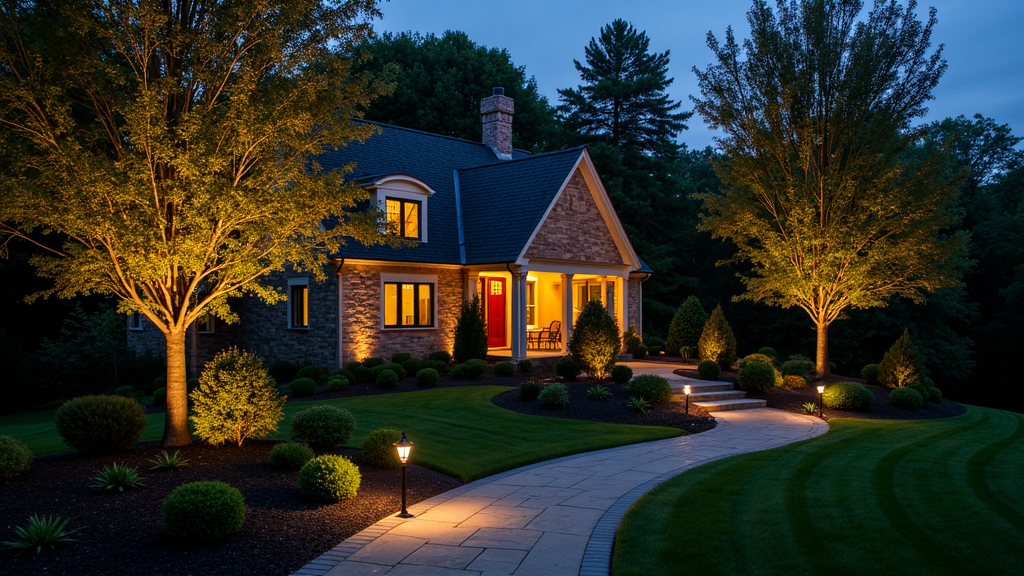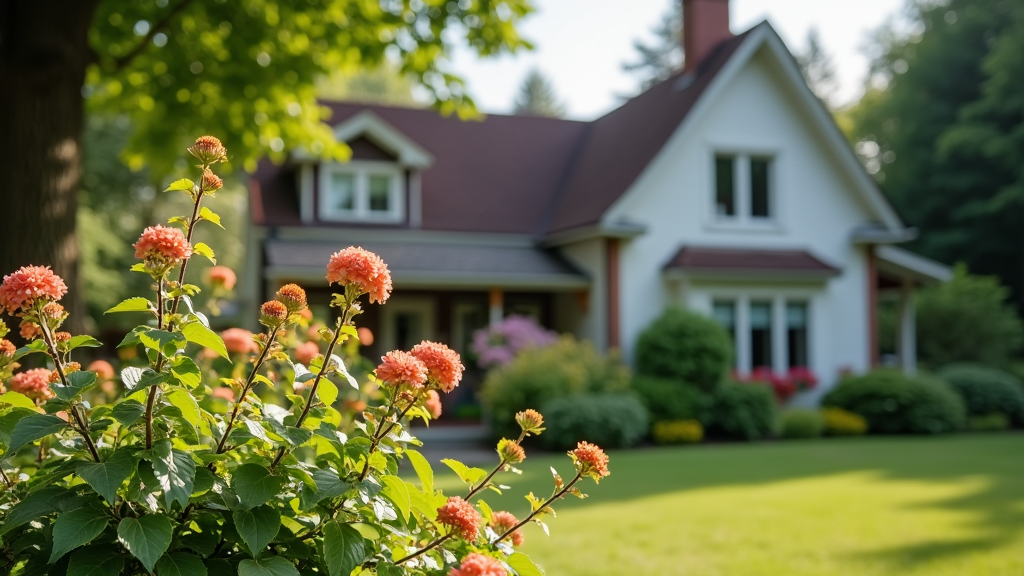Introduction
In the world of landscape design, incorporating ancient philosophies can create a harmonious and balanced environment. One such philosophy is Feng Shui, which originated in China over 3,000 years ago. It emphasizes the arrangement of space to promote well-being, prosperity, and tranquility. By integrating Feng Shui principles into your landscape designs, you not only enhance the beauty of your outdoor spaces but also foster positive energy flow. This article explores various aspects of Feng Shui and how these can be effectively used in designing landscapes.
Understanding Feng Shui: A Brief Overview
What is Feng Shui?
Feng Shui translates to "wind" and "water" in Chinese, symbolizing the natural elements that affect our living environment. It is based on the belief that everything has energy (or "chi"), and aligning this energy with our surroundings is crucial for health and happiness.
The Importance of Chi in Landscape Design
Chi flows through our environment continuously. In landscape design, ensuring that chi flows freely can greatly influence the mood and health of those who interact with the space. Properly designed landscapes encourage this flow while avoiding obstacles that could disrupt it.
Basic Principles of Feng Shui
Feng Shui principles revolve around five key elements: Wood, Fire, Earth, Metal, and Water. Each element corresponds to different colors, shapes, and materials which can be utilized in landscape design to create balance.
Incorporating Feng Shui Principles into Your Landscape Designs
1. The Role of Location in Landscape Design
When designing landscapes with Feng Shui in mind, location plays a vital role. Consider how your garden or yard fits within its broader surroundings. Is it near water? Are there hills or trees nearby? Understanding these natural features allows for a more thoughtful design approach.
1.1 Assessing Natural Features
Conduct an assessment of existing natural features before planning any changes:
- Water Sources: Lakes, rivers, or ponds can amplify positive chi. Elevation Changes: Hills or slopes influence energy flow; higher ground often symbolizes stability. Vegetation: Mature trees provide shelter but can also block light; consider their placement wisely.
1.2 Use of Compass Directions
Each direction has unique characteristics associated with it:
- North: Career opportunities South: Fame and reputation East: Family and health West: Creativity and children
Positioning elements according to these directions can enhance specific life areas.
2. Designing Entry Points for Positive Energy Flow
The entrance to your property is crucial for welcoming positive chi. Make sure it's inviting!
2.1 Pathway Design
Opt for winding pathways rather than straight lines since curves allow for gentle chi movement:
- Use materials like gravel or flagstone. Include plants along paths to soften edges.
2.2 Doorway Alignment with Nature
Ensure doorways align with nature’s beauty—like a view of a tree or flower—to draw people outside into the vibrant energy.
3. Balancing Elements: Water Features in Landscapes
3.1 The Symbolism of Water in Feng Shui
Water represents wealth and abundance; hence incorporating water features can significantly uplift your landscape design:
- Fountains Ponds Streams
3.2 Placement Tips for Water Features
When positioning water features:
- Avoid sharp angles pointing towards them. Ensure they are clean and well-maintained.
4. Utilizing Plants Wisely in Landscape Designs
Plants play an essential role in enhancing chi flow within your landscape:
4.1 Choosing Plants Based on Energy Characteristics
Different plants symbolize various energies:
| Plant Type | Energy Representation | |------------|-----------------------| | Bamboo | Flexibility | | Chrysanthemums | Longevity | | Ferns | Protection |
4.2 Arranging Plants for Balance
Place taller plants towards the back while shorter ones should be positioned upfront to create visual harmony.
Creating Zones Within Your Landscape Design
5. Defining Functional Areas
Creating distinct zones helps organize your outdoor space effectively:
5.1 Leisure Areas
Designate spots for relaxation using comfortable seating arrangements surrounded by soothing plants.


5.2 Active Spaces
Consider areas for gardening or play—these should have a vibrant energy conducive to activity.
6: The Impact of Color in Landscape Design
Colors significantly influence mood—and thus should be integral when “Incorporating Feng Shui Principles into Your Landscape Designs.”
6.1 Color Associations
Here’s a brief overview:
| Color | Association | |------------|----------------------------------| | Red | Passion & vitality | | Green | Growth & tranquility | | Blue | Calmness & clarity |
6.2 Using Color Strategically
Integrate color through flowers or painted structures to evoke specific feelings associated with each hue.
7: Hardscaping Elements That Enhance Chi Flow
Hardscape refers to non-living components within landscape design like walls or patios:
7.1 Material Choices Matter
Natural materials like stone harmonize better than artificial ones which may disrupt chi flow.
7.2 Creating Balance with Hardscaping
Avoid sharp edges—opt for rounded shapes that promote gentle energy circulation around hardscaping features.
8: Lighting Techniques for Enhancing Outdoor Spaces
Lighting dramatically affects ambiance; it’s vital when “Incorporating http://shaneyigk254.trexgame.net/how-to-use-texture-in-your-landscape-designs-for-added-depth Feng Shui Principles into Your Landscape Designs.”
8.1 Natural vs Artificial Light
Maximize sunlight during the day while ensuring balance at night with soft lighting options like lanterns or string lights.
FAQs about Integrating Feng Shui into Landscape Design
Q1: How do I start implementing Feng Shui principles in my garden?
Begin by assessing existing features; then plan pathways and plant arrangements that promote good chi flow.
Q2: Can I use modern materials while following Feng Shui?
Yes! However, prioritize natural elements where possible as they harmonize better with chi.
Q3: What if my outdoor space is small?
Smaller spaces can still benefit from thoughtful plant choices; vertical gardens can help utilize space effectively.
Q4: Should I consult a professional designer?
If you feel overwhelmed by choices or need assistance creating balance—consider hiring someone experienced in both landscaping and feng shui.
Q5: How does climate affect my landscape design choices?
Different climates yield diverse plant options; select those suited for local conditions while still adhering to feng shui principles.
Q6: Can I combine different styles within my feng shui garden?
Absolutely! Mixing styles is fine as long as you maintain harmony among colors, materials, and layouts.
Conclusion
Designing landscapes that incorporate Feng Shui principles not only beautifies spaces but also promotes emotional well-being through enhanced energy flow—truly creating an oasis where individuals can thrive energetically! By following these guidelines on location assessment, plant selection, water feature integration, color usage—and more—you will find yourself crafting serene environments filled with positive vibes!
By taking time out to think about these aspects as you plan your next project—you’ll ensure you’re not merely designing landscapes but actively cultivating spaces imbued with richness from ancient wisdom! With careful thought put into every detail—from entry points right down to color schemes—you’re bound to have a masterpiece on your hands!